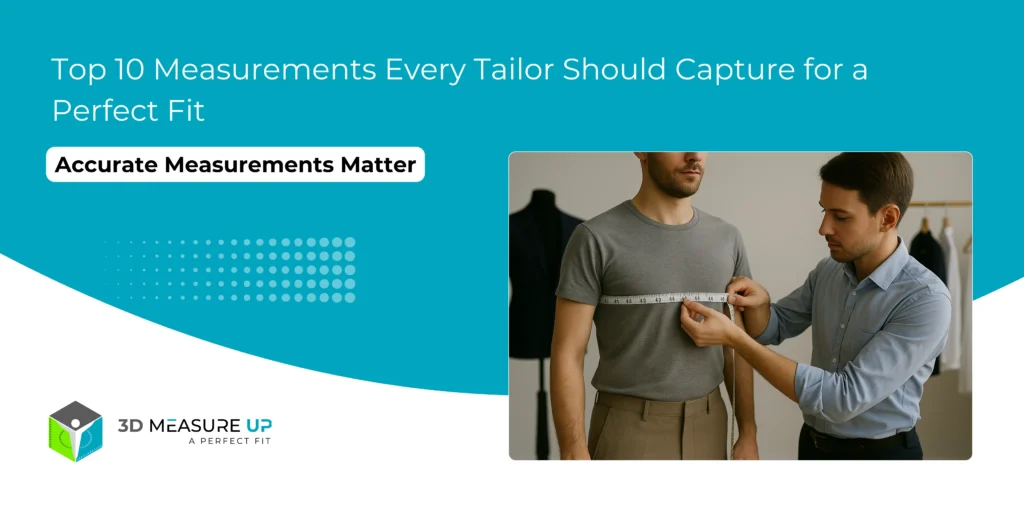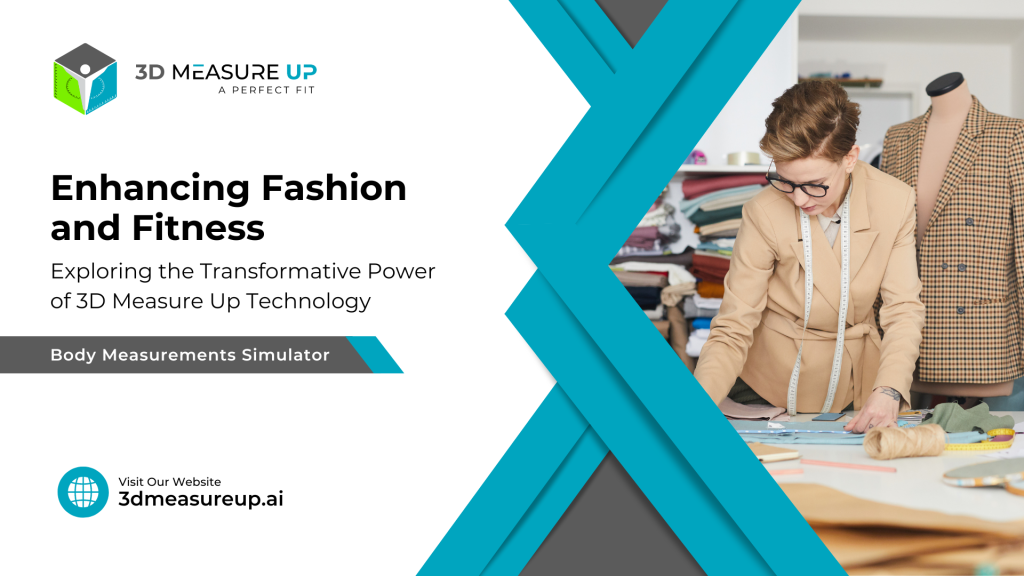Top 10 Measurements Every Tailor Should Capture for a Perfect Fit
Top 10 Measurements Every Tailor Should Capture for a Perfect Fit Getting the perfect fit isn’t just about good sewing or picking the right fabric; it all starts with accurate body measurements. Whether it’s a custom suit, a wedding dress, or a uniform, tailors need the right measurements to make clothes that fit well and feel great. In this blog, we’ll walk you through the top 10 body measurements every tailor should know. We’ll also show you how smart tools like 3D Measure Up make the job faster, easier, and more accurate, helping tailors save time, avoid mistakes, and keep customers happy. Why Accurate Body Measurements Matter Even minor errors in body measurement can cause: Poor garment drape Uncomfortable fit Increased alteration costs Customer dissatisfaction Capturing the right measurements and capturing them correctly is the foundation of tailoring excellence. The Top 10 Critical Tailoring Measurements 1. Chest Girth Where to measure: Around the fullest part of the chest, usually just under the armpits, and across the shoulder blades. Why it's important: Key for fitting jackets, shirts, blazers, and dresses. 2. Waist Girth Where to measure: Around the natural waistline—typically the narrowest part of the torso. Why it's important: Essential for shaping trousers, skirts, and dresses. 3. Hip Girth Where to measure: Around the fullest part of the hips and buttocks. Why it's important: Critical for pants, skirts, dresses, and tailored coats. 4. Shoulder Width (Breadth) Where to measure: Across the back from the tip of one shoulder bone to the other. Why it's important: Determines jacket shoulder fit and sleeve setting. 5. Sleeve Length Where to measure: From the shoulder point down along the arm to the wrist bone, with the arm slightly bent. Why it's important: Ensures sleeves are neither too short nor too long. 6. Neck Circumference Where to measure: Around the base of the neck where a collar would sit. Why it's important: Crucial for shirt collars and some formal dresses. 7. Inseam Length Where to measure: From the crotch point down to the bottom of the ankle along the inside leg. Why it's important: Essential for trousers and jeans fit. 8. Outseam Length Where to measure: From the natural waistline to the ankle, down the side of the leg. Why it's important: Used for pants, skirts, and dresses. 9. Back Length Where to measure: From the prominent bone at the base of the neck (C7 vertebra) down to the natural waist. Why it's important: Important for jacket and dress torso fitting. 10. Thigh Girth Where to measure: Around the fullest part of the upper thigh. Why it's important: Ensures proper fitting of trousers, shorts, and sportswear. Bonus Measurements That Add Precision Wrist circumference Ankle circumference Armhole depth Bust point to bust point distance Knee girth (for fitted trousers) How 3D Measure Up Simplifies Tailoring Measurements Every great garment starts with great measurements. By mastering these Top 10 essential measurements and embracing digital AI-Powered software like 3D Measure Up, tailors can deliver unmatched precision and personalization, time after time. With 3D Measure Up, you can: Automatically extract over 150+ measurements from a 3D scan. Eliminate manual errors and variability. Capture additional measurements like surface lengths and volumetric dimensions. Save and reuse measurement data for future fittings. The result? Faster, more accurate fittings and happier clients. ProtoTech’s 3D Measure Up AI-powered 3D body measurement software delivers unmatched precision by capturing over 250 body landmarks, ensuring a perfect fit, enhancing customer experience, reducing return rates, and boosting sales. Ready to enhance your tailoring process? Get a FREE TRIAL today to transform your workflow!




